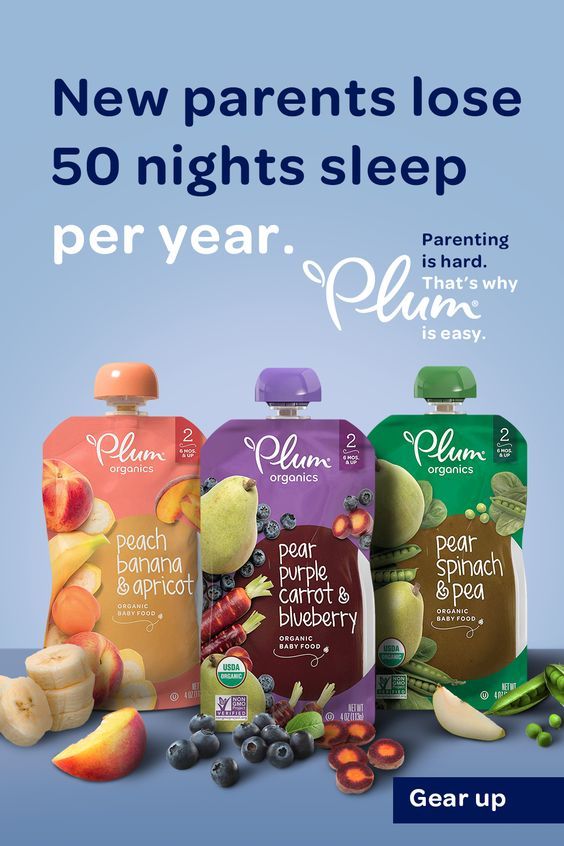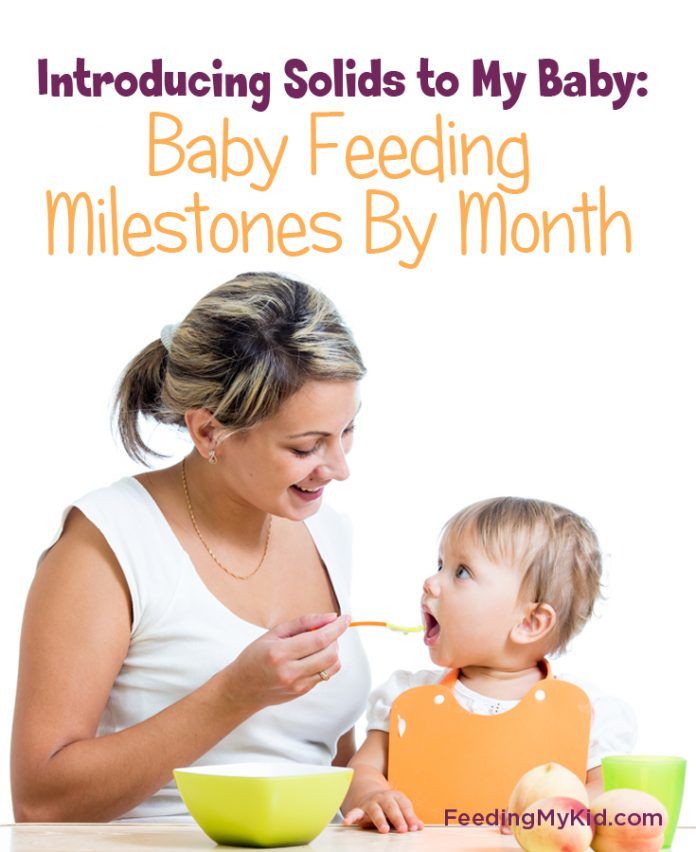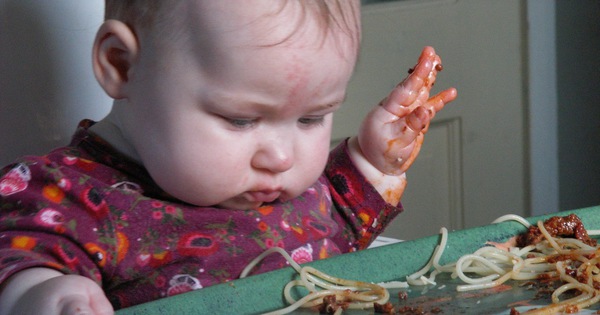How much solid food should baby eat at 6 months
Feeding your baby: 6–12 months
At 6 months of age, breastmilk continues to be a vital source of nutrition; but it’s not enough by itself. You need to now introduce your baby to solid food, in addition to breastmilk, to keep up with her growing needs.
Be sure you give your baby her first foods after she has breastfed, or between nursing sessions, so that your baby continues to breastfeed as much as possible.
When you start to feed your baby solid food, take extra care that she doesn’t become sick. As she crawls about and explores, germs can spread from her hands to her mouth. Protect your baby from getting sick by washing your and her hands with soap before preparing food and before every feeding.
Your baby's first foods
When your baby is 6 months old, she is just learning to chew. Her first foods need to be soft so they’re very easy to swallow, such as porridge or well mashed fruits and vegetables. Did you know that when porridge is too watery, it doesn't have as many nutrients? To make it more nutritious, cook it until it’s thick enough not to run off the spoon.
Feed your baby when you see her give signs that she's hungry – such as putting her hands to her mouth. After washing hands, start by giving your baby just two to three spoonfuls of soft food, twice a day. At this age, her stomach is small so she can only eat small amounts at each meal.
The taste of a new food may surprise your baby. Give her time to get used to these new foods and flavours. Be patient and don’t force your baby to eat. Watch for signs that she is full and stop feeding her then.
As your baby grows, her stomach also grows and she can eat more food with each meal.
Feeding your baby: 6–8 months old
From 6–8 months old, feed your baby half a cup of soft food two to three times a day. Your baby can eat anything except honey, which she shouldn't eat until she is a year old. You can start to add a healthy snack, like mashed fruit, between meals. As your baby gets increasing amounts of solid foods, she should continue to get the same amount of breastmilk.
Feeding your baby: 9–11 months old
From 9–11 months old, your baby can take half a cup of food three to four times a day, plus a healthy snack. Now you can start to chop up soft food into small pieces instead of mashing it. Your baby may even start to eat food herself with her fingers. Continue to breastfeed whenever your baby is hungry.
Each meal needs to be both easy for your baby to eat and packed with nutrition. Make every bite count.
Foods need to be rich in energy and nutrients. In addition to grains and potatoes, be sure your baby has vegetables and fruits, legumes and seeds, a little energy-rich oil or fat, and – especially – animal foods (dairy, eggs, meat, fish and poultry) every day. Eating a variety of foods every day gives your baby the best chance of getting all the nutrients he needs.
If your baby refuses a new food or spits it out, don’t force it. Try again a few days later. You can also try mixing it with another food that your baby likes or squeezing a little breastmilk on top.
Feeding non-breastfed babies
If you're not breastfeeding your baby, she’ll need to eat more often. She'll also need to rely on other foods, including milk products, to get all the nutrition her body needs.
- Start to give your baby solid foods at 6 months of age, just as a breastfed baby would need. Begin with two to three spoonfuls of soft and mashed food four times a day, which will give her the nutrients she needs without breastmilk.
- From 6–8 months old, she’ll need half a cup of soft food four times a day, plus a healthy snack.
- From 9–11 months old, she’ll need half a cup of food four to five times a day, plus two healthy snacks.
How much should my baby eat? A guide to baby food portions
- Community
- Getting Pregnant
- Pregnancy
- Baby Names
- Baby
- Toddler
- Child
- Health
- Family
- Courses
- Registry Builder
- Baby Products
Advertisement
Wondering how much to feed your baby? This can be hard to figure out, especially when you're starting solids and most of your baby's food ends up on your little one or the floor. It's also difficult to determine how much an 8-month-old (or older baby) should eat – babies this age are more interested in solid foods but still get most of their nutrition from breast milk or formula. This visual guide to baby food portions can help you figure out how much your baby should eat at every stage.
It's also difficult to determine how much an 8-month-old (or older baby) should eat – babies this age are more interested in solid foods but still get most of their nutrition from breast milk or formula. This visual guide to baby food portions can help you figure out how much your baby should eat at every stage.
Photo credit: Karla Martin for BabyCenter
How much should my baby eat?
Do you worry that your baby is eating too little or too much? Your baby will self-regulate her food intake based on what their body needs, so let their appetite be your guide.
It's helpful to have a reference point, however. Here are photos of how much solid food a baby typically eats in a day. You can also ask your baby's doctor for feeding advice.
This visual guide shows:
- Portions for infants who are new to solids (typically 4 to 6 months)
- Two sample meals for a younger baby (6 to 8 months)
- Three sample meals and two snacks for an older baby (8 to 12 months) from a menu developed by the American Academy of Pediatrics (AAP)
Your little one may eat less or more than what's shown here. Your job is to provide a variety of healthy foods at regular intervals without pressure, and their job is to decide what and how much to eat.
Your job is to provide a variety of healthy foods at regular intervals without pressure, and their job is to decide what and how much to eat.
Photo credit: iStock.com / UntitledImages
Watch for signs your baby is full
Lots of factors – including activity level, growth spurts or plateaus, illness, and teething – will affect your baby's appetite, which can vary daily.
End feeding when they signal that they're done. Signs of being full include:
- Turning their head away
- Refusing to open their mouth for another bite after they've swallowed (resist the urge to encourage your baby to have one last spoonful)
- Leaning back in their chair
- Playing with the spoon or food rather than eating
Photo credit: Karla Martin for BabyCenter
How much a 4- to 6-month-old should eat
When your baby is developmentally ready for solids, typically around 4 to 6 months, talk to their doctor about introducing solid foods. The first bites are mostly about them getting used to the idea of having something different in their mouth.
The first bites are mostly about them getting used to the idea of having something different in their mouth.
- Start with a very small amount, 1 to 2 teaspoons, of a single-ingredient puree.
- Gradually increase to 1 to 2 tablespoons of food once a day.
- Follow your baby's fullness cues.
Popular first foods include pureed mango, banana, chicken, turkey, beef, peas, sweet potatoes, and infant cereal. It's up to you what food to start with, but wait 3 to 5 days between introducing each new food to make sure your baby doesn't have an allergic reaction or food intolerance. (And remember, no cow's milk or honey until age 1.)
Photo credit: Karla Martin for BabyCenter
How much a 6- to 8-month-old should eat
As your little one gets more comfortable with solids, you can increase the frequency of meals and variety of food.
- Transition from one to two meals a day, typically by 8 months.
- Over time, add a second food to each meal.
 The photo above is an example of a meal with two foods.
The photo above is an example of a meal with two foods. - Once you've worked up to two meals with two foods each, aim for a balance of proteins, vegetables, fruits, and grains in their daily diet.
- Whenever you introduce a new food, start with a very small amount, a teaspoon or two, to allow your baby to get used to its flavor and texture.
- Start with a soupy consistency. Gradually add more texture as their eating skills improve.
Expect their intake of breast milk or formula to go down. They'll start drinking less of it as they eat more solid foods. Provide healthy options at mealtimes, and let them choose how much to eat.
Note: The jars in all photos are standard 4-ounce baby food jars.
Photo credit: Karla Martin for BabyCenter
Breakfast for a younger baby (6 to 8 months)
Cereal and fruit make an easy combination for a morning meal.
Grain: Iron-fortified, whole-grain infant cereal is a popular first grain. At 6 months, a typical daily portion of infant cereal mixed with breast milk or formula might be 2 to 3 tablespoons, increasing to 4 to 8 tablespoons (1/4 to 1/2 cup) by 8 months. (It's best to avoid rice cereal, though.)
At 6 months, a typical daily portion of infant cereal mixed with breast milk or formula might be 2 to 3 tablespoons, increasing to 4 to 8 tablespoons (1/4 to 1/2 cup) by 8 months. (It's best to avoid rice cereal, though.)
Fruit: Babies love the natural sweetness of fruits like pears, apples, berries, prunes, and stone fruits. Between 6 and 8 months, a baby will typically transition from about 2 to 3 tablespoons of fruit puree a day to 4 to 8 tablespoons (1/4 to 1/2 cup) of mashed or minced fruit.
Photo credit: Karla Martin for BabyCenter
Dinner for a younger baby (6 to 8 months)
If you serve a grain and fruit in the morning, consider offering a protein-rich food and vegetable later in the day. Your child may eat more or less than the amounts shown.
Protein: A baby might transition from eating 1 to 2 tablespoons of meat puree at 6 months to 2 to 4 tablespoons at 8 months, for example. Other good protein sources include cheese, unsweetened plain whole-milk yogurt, tofu, beans, and lentils.
Vegetables: Between 6 and 8 months, a baby will typically transition from about 2 to 3 tablespoons of vegetable puree a day to 4 to 8 tablespoons (1/4 to 1/2 cup). Try classic favorites like carrots, spinach, or butternut squash, as well as less traditional first foods such as parsnips, beets, or asparagus.
As your child's eating skills improve, gradually add more texture by dicing or mincing foods.
Photo credit: Karla Martin for BabyCenter
How much an 8- to 12-month-old should eat
By 8 months or so, your baby is likely getting the hang of eating and needs to eat more calories to support their growing body. But since their little belly can't hold a lot of food, they'll need to eat more often. Every baby is different, but this may be a good time to try offering a third solid food meal.
During this period:
- Continue to give your baby breast milk or formula.
- Add morning and afternoon snacks. (Some babies this age are happy with breast milk or formula as their snack, while others gravitate toward solid foods.
:max_bytes(150000):strip_icc()/starting-solid-foods-with-baby-led-weaning-4687500-v1-2a3a5f2e4a874f0c88ea7812cccde6bd.png) ) Once you've added a third meal and snacks, your baby will be eating or drinking something about every two to three hours.
) Once you've added a third meal and snacks, your baby will be eating or drinking something about every two to three hours.
- Continue to aim for a mix of proteins, vegetables, fruits, and grains.
- Introduce coarser and chunkier textures, for example, by dicing or mincing food instead of pureeing it, and graduate to soft finger foods as your baby's eating skills improve.
- Avoid foods with added sugars. Check the Nutrition Facts label on packaged foods, and try to steer clear of foods that list 1 gram or more of "Added Sugars."
- Provide healthy options, and let your baby choose how much to eat.
To visualize daily portions for an 8- to 12-month-old, check out the following photos of a typical day's menu for a baby this age, developed by the AAP.
Your child may eat more or less than these amounts. If you're concerned about how much your baby is eating, talk to their doctor for advice.
Photo credit: Karla Martin for BabyCenter
Breakfast for an older baby (8 to 12 months)
The AAP sample menu for a baby 8 to 12 months features a breakfast consisting of:
- 4 to 8 tablespoons (1/4 to 1/2 cup) whole-grain infant cereal mixed with formula or breast milk
- 4 to 8 tablespoons (1/4 to 1/2 cup) diced fruit
Note: This is an example. Your baby may eat different foods and amounts.
Your baby may eat different foods and amounts.
Photo credit: Karla Martin for BabyCenter
Morning snack for an older baby (8 to 12 months)
The AAP sample menu for a baby 8 to 12 months features a morning snack consisting of:
- 4 tablespoons (1/4 cup) diced cheese or cooked vegetables
Note: This is an example of a morning snack, which babies typically add sometime between 8 and 12 months. Your baby may eat different foods and amounts.
Photo credit: Karla Martin for BabyCenter
Lunch for an older baby (8 to 12 months)
The AAP sample menu for a baby 8 to 12 months features a lunch consisting of:
- 4 to 8 tablespoons (1/4 to 1/2 cup) unsweetened plain whole-milk yogurt or cottage cheese, or minced meat
- 4 to 8 tablespoons (1/4 to 1/2 cup) diced or mashed yellow or orange vegetable
Note: This is an example. Your baby may eat different foods and amounts.
Photo credit: Karla Martin for BabyCenter
Afternoon snack for an older baby (8 to 12 months)
The AAP sample menu for a baby 8 to 12 months features an afternoon snack consisting of:
- 4 tablespoons (1/4 cup) diced fruit or unsweetened plain whole-milk yogurt
- 1 whole-grain teething biscuit or cracker
Note: This is an example of an afternoon snack, which babies typically add sometime between 8 and 12 months. Your baby may eat different foods and amounts.
Your baby may eat different foods and amounts.
Photo credit: Karla Martin for BabyCenter
Dinner for older baby (8 to 12 months)
The AAP sample menu for a baby 8 to 12 months features a dinner consisting of:
- 4 tablespoons (1/4 cup) minced or ground poultry or meat, or diced tofu
- 4 to 8 tablespoons (1/4 to 1/2) cup diced, cooked green vegetable
- 4 tablespoons (1/4 cup) noodles, pasta, rice, or potato
- 4 tablespoons (1/4 cup) diced fruit
Note: This is an example. Your baby may eat different foods and amounts.
Photo credit: Karla Martin for BabyCenter
How much should my baby drink once they start eating solids?
Breast milk or formula will fully meet your child's hydration needs until they're about 6 months old. They may start drinking less as solid foods become a bigger part of their diet. Here are typical daily amounts by age – your baby's intake may be different, however.
6 to 8 months: 24 to 32 ounces of formula, or continued breastfeeding on demand
8 to 12 months: 24 ounces of formula, or continued breastfeeding on demand
Water: You can offer your baby water once they start eating solids, but let them self-regulate how much they drink. The Centers for Disease Control and Prevention (CDC) recommends giving babies who are 6 to 12 months old 4 to 6 ounces of water a day, but what your baby decides to drink may vary. They may drink more on a hot day, for example.
Avoid juice: Juice isn't recommended for babies younger than 12 months.
Photo credit: iStock.com / SDI Productions
Your baby has the final say
Keep in mind that these portions are an estimate. The truth is, every baby is different, and there's no set amount of food that's appropriate for every baby at every stage.
If you're worried about whether your baby is eating enough – or too much – the best advice is to look for and respond to signs that your baby is full.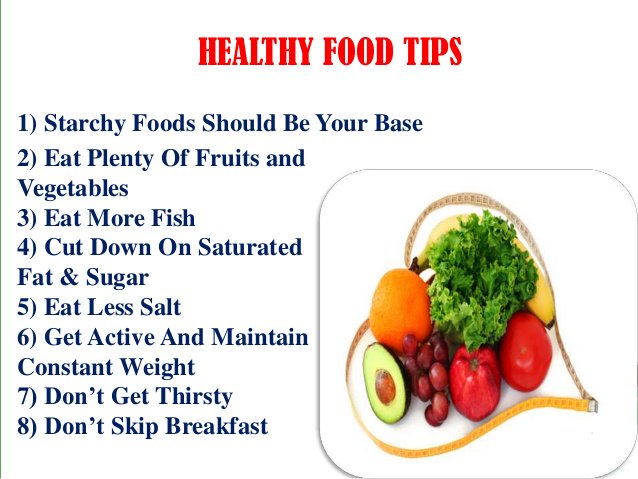
Your baby's doctor will chart their weight gain at regular intervals. If the doctor sees a consistent growth curve and doesn't have other concerns, your baby is most likely eating the right amount of food.
Hungry for more?
Age-by-age guide to feeding your baby
The 10 best foods for babies
The worst foods for babies
Using spices and seasoning in baby food
Was this article helpful?
Yes
No
Elizabeth Dougherty
Elizabeth Dougherty is a veteran parenting writer and editor who's been contributing to BabyCenter since 2015. She's an intrepid traveler, devoted yogi, and longtime resident of Silicon Valley, where she lives with her husband and son.
Advertisement | page continues below
Advertisement
What portions of food should be given to a child under 1 year old
Kizino Polina Aleksandrovna
pediatrician, perinatal psychologist
The nutrition plan for babies at 6 months and at 8 months is different. What a child should eat at every age, how large portions of food for a child can be, what foods should not be given to children under one year old, says pediatrician Polina Aleksandrovna Kizino.
What a child should eat at every age, how large portions of food for a child can be, what foods should not be given to children under one year old, says pediatrician Polina Aleksandrovna Kizino.
- Polina Alexandrovna, please tell us what foods are present in the diet of a child in the first year of life.
— It depends on the age.
- First half of the year - the child's diet contains milk nutrition: breast milk, milk formula or mixed feeding.
- Approximately from five months - the child's diet is optimized for the content of minerals, trace elements and vitamins, the lack of which may occur in the second half of the year. For this, complementary foods are introduced to the baby - vegetables, cereals, fruits appear in his diet.
- By the age of 1 year - the child is already familiar with all the main products (dairy and sour-milk products, meat, fish, flour products).
I draw the attention of parents: All these products must be adapted according to the age of the child, they must not contain crystalline sugar, salt, spices. Children's food should not be fried, it is prepared in a gentle way - mostly boiled or steamed.
Children's food should not be fried, it is prepared in a gentle way - mostly boiled or steamed.
Advice to mom: baby food of industrial production is recommended for a child under one year old - purees, cereals and cream soups, which are specially designed for children's diet using special technologies according to specially developed recipes and take into account the metabolism and digestion of young children.
— How many meals should a child of the first year of life have per day?
- If we compare the feeding of a newborn and a one-year-old child, then there will undoubtedly be differences in the number of meals. In the first days and weeks after birth, pediatricians recommend free feeding and breastfeeding every 1.5-2 hours during the day and 3-4 hours at night. At night, the concentration of prolactin (the hormone responsible for the synthesis of breast milk) is higher. Therefore, night feedings for newborns are very important.
In the future, mother and baby choose the most suitable schedule for them: daytime feedings can be every 2.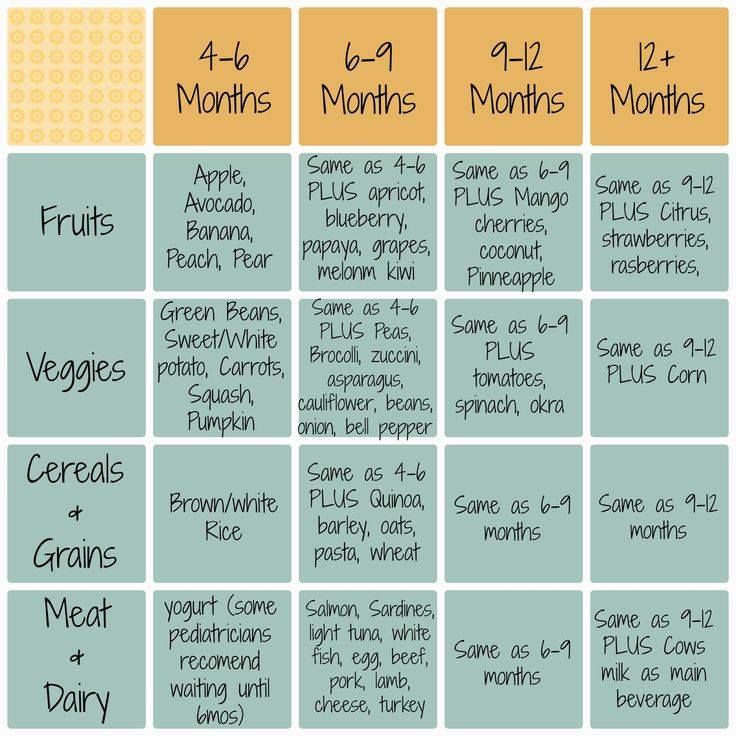 5-3 hours, and the night interval increases. In the future, with age, the intervals increase, and the number of night feedings decreases.
5-3 hours, and the night interval increases. In the future, with age, the intervals increase, and the number of night feedings decreases.
- Newborn baby - 10-12 feedings per day.
- 4 months - 6-7 feedings per day.
- 6 months - 5-6 feedings per day (five daytime, one nightly).
- 12 months - 5 feedings per day (baby does not eat at night). Sometimes four feedings are enough for a baby, and sometimes, in addition to five daily feedings, at night, a child may ask for a breast or a bottle once. Variations are acceptable if the child is adequately gaining weight and height.
- Talking about portions for feeding children - how much food should be given at each meal, depending on the number of feedings per day?
— The size of a portion of complementary foods for a child depends on many factors. A newborn baby and a one-year-old baby will consume completely different amounts of food at one meal and per day.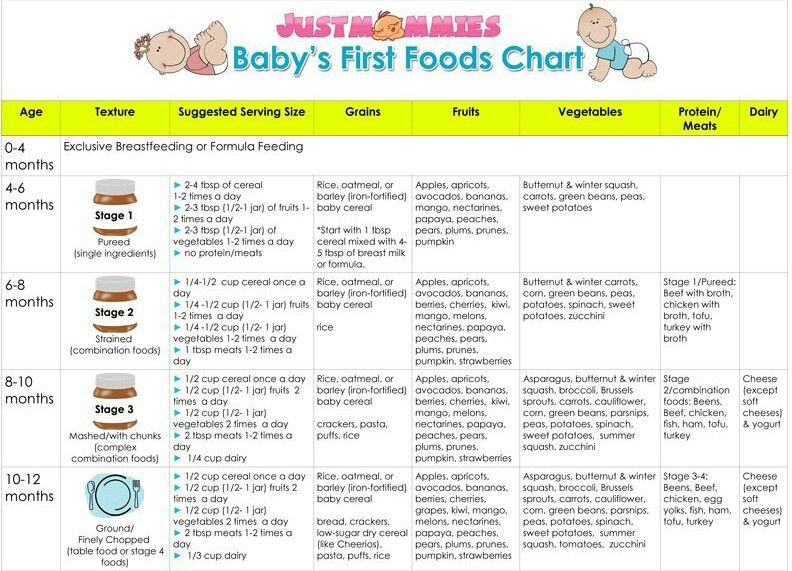
The daily amount of food is calculated according to the formula for each individual child according to his age and body weight. These formulas change during the first year, and the portion of food decreases depending on the weight: for a child of the first months it is 1/5 of the body weight, by six months - 1/7 of the body weight. The portions of complementary foods at 6-7 months will be different from the portions of complementary foods at 10-11 months.
The amount of food for one meal depends on how many times the child eats per day. For example, a child will eat a daily volume of 1 liter of milk or milk formula five times, 200 g at a time. If the child eats four times a day, then portions and breaks between feedings will be larger, but in a day he will use the recommended norm for himself.
Important! New foods are introduced in small doses to make sure the child is responding well to the food they are given.
- Powdered milk formula introduction
— Despite the fact that the composition and properties of the adapted mixtures are close to human milk, the introduction of a new milk formula into the diet is in fact a stressful situation for the child, as it causes a change in the processes of digestion and intestinal microflora.
 In practice, it is not uncommon for children to have allergic reactions to a new product. Therefore, you should start introducing a new mixture with microdoses - 10-20 or 30 ml of the mixture and carefully monitor how the child learns it. After making sure that there are no negative reactions, you should offer the child a larger portion and bring it to the required volume within 5-7 days. Thus, the child's body adapts more easily to the new mixture and learns to digest and assimilate it without disturbing digestion.
In practice, it is not uncommon for children to have allergic reactions to a new product. Therefore, you should start introducing a new mixture with microdoses - 10-20 or 30 ml of the mixture and carefully monitor how the child learns it. After making sure that there are no negative reactions, you should offer the child a larger portion and bring it to the required volume within 5-7 days. Thus, the child's body adapts more easily to the new mixture and learns to digest and assimilate it without disturbing digestion. - Introduction of first and second complementary foods
- Solid food requires special attention from parents. When starting to introduce the first or second complementary foods, it is important not to overload the baby's gastrointestinal tract and not to miss a food intolerance or an allergic reaction. Therefore, it is extremely important to follow the rules for the introduction of complementary foods:
- start complementary foods with small doses;
- introduce new products in the morning;
- track a child's reaction to a specific product;
- to acquaint the child with only one product during the week.

- Diet expansion
— When a child already receives a sufficiently varied diet - vegetables, cereals, fruits, meat and dairy products, it can be assumed that he will react calmly to what, and to what - an undesirable reaction. Therefore, what falls under suspicion is not offered to a child under 1 year old, and what does not cause suspicion can be introduced faster and spent on it not a week, but 3-4 days. But still, we give new products in the first half of the day, tracking the reaction.
— How to competently increase the volume of servings?
— Properly means slowly and gradually. If a baby needs a certain amount of formula or breast milk, then the volume of his stomach corresponds to this need. If yesterday you gave 200 ml at a time, and today you increase the portion overnight by 40 ml, you should not act like that. (the child will be hard and uncomfortable, he will burp too much). The portion of food for the baby increases gradually, 10-15 ml at a time (without injuring the child so that he can cope with the new volume and not burp).
The portion of food for the baby increases gradually, 10-15 ml at a time (without injuring the child so that he can cope with the new volume and not burp).
- "Microportion" - how much?
- Volume ½ or 1 teaspoon. On the first day of introducing complementary foods, half or one teaspoon of a new product is given, no more, even if the child asks. This is necessary in order to track the reaction of the baby, not to load the body with a product that can cause intolerance or an allergic reaction.
— What is the ratio of basic milk nutrition and complementary foods in the diet of a child in the first year of life?
— A child has different needs at every age.
- First six months of life. Up to six months, the child mainly needs breast milk, complementary foods are for informational purposes only.
- The second half of life. After six months, the diet expands. The older the child becomes, the higher his need for basic nutrients - proteins, fats and carbohydrates, as well as vitamins and trace elements, additional sources of which are cereals, vegetables, fruits and other complementary foods.
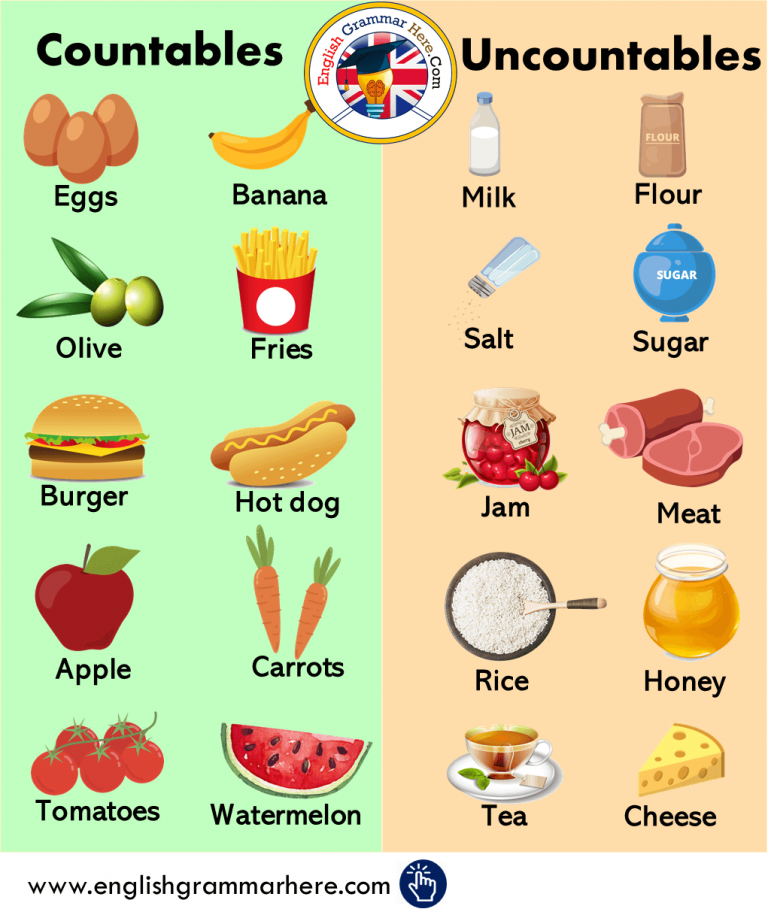
— What foods should be given at what time of the day?
— It is important to introduce a new product in the first half of the day in order to monitor how the child reacts to them.
- Breakfast - cereals, cereals (contain enough carbohydrates to store energy and strength for the whole day).
- Snack and afternoon snack Fruit purees, light dairy products, curds and yoghurts appropriate for the child's age (snack should not be heavy enough).
- Lunch - vegetables, mashed meat, closer to a year - food with soft pieces (full meals, similar to those that parents eat).
- Dinner - vegetables, fruits, dairy products, cereals (do not try to feed the child, he will calmly fall asleep an hour and a half to two hours after eating and will not be hungry until the morning: on complementary foods, the gastrointestinal tract learns to rest at night, like in adults ).
Advice for mom: from the MAMAKO ® assortment, you can choose healthy products for a varied diet of your baby - dairy-free baby cereals and baby goat milk cereals for breakfast, cream soup for lunch, fruit puree with cottage cheese for an afternoon snack or a light dinner.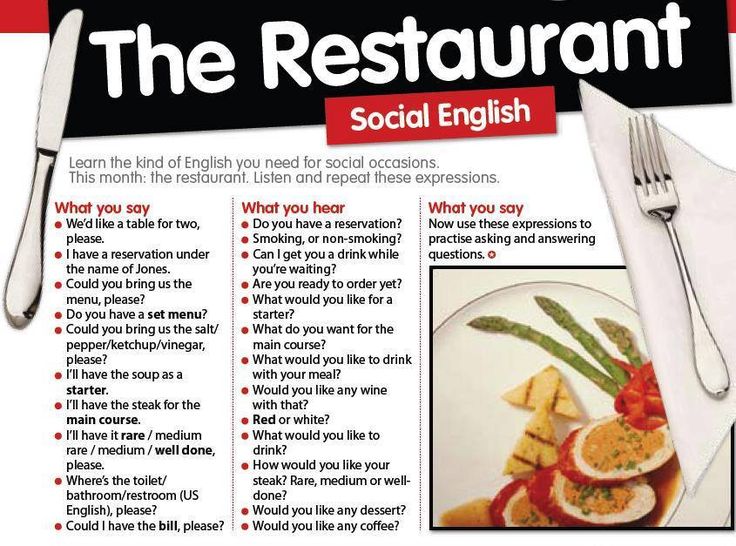
— What food should not be given as complementary foods for up to a year?
- The child should not be given spicy, salty, overly sweet, spiced, fried foods. The baby needs food and dishes prepared in traditional ways, which are used in baby food in the form of vegetable, fruit and meat purees, cereals, soups or adapted dairy products. This will make the baby's diet balanced and will not irritate the baby's delicate digestive tract. At the stage of introducing complementary foods, the child only adapts to a new type of food and is completely unprepared for adult food.
Give your child only food that is good for him.
Important! Obligate allergens are those foods that most people can be allergic to: citrus fruits, chocolate, honey, nuts, seafood, strawberries, and bright red vegetables and fruits. It is better not to acquaint a child under a year with them.
- Polina Alexandrovna, tell us about the approximate diet of babies, depending on age in the first year of life.
— Baby's menu changes with age. At what time, in what form and how much to give products intended for a child of a certain age category, is tentatively presented in the tables of the Union of Pediatricians of Russia. They will help determine portions of complementary foods for months and make a menu for the baby, taking into account his needs and individual characteristics.
Download the leaflet in pdf
When you first introduce your child to new products, the main thing is not to rush. Serving rates for children under 1 year old depend on age.
In the early stages, the purpose of introducing complementary foods is not to feed the child and make the portion as large as possible, but to introduce him to new foods. Therefore, it is not worth worrying about the portion size, rushing the baby and trying to feed him through force.
At the stage of expanding the diet, when complementary foods take up more and more space in the daily menu of the baby, and milk feedings are reduced, portions of complementary foods for children should be increased gradually and according to age, so that the child's body adapts to adult food more easily and quickly.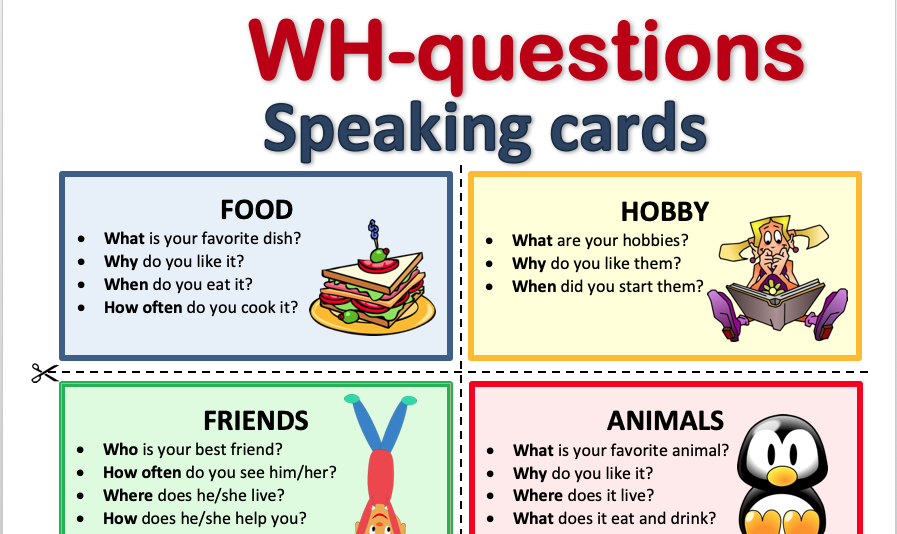
* Breast milk is the best food for babies. WHO recommends exclusive breastfeeding for the first 6 months of a child's life and continued breastfeeding after complementary foods are introduced until the age of 2 years. Before introducing new products into the baby's diet, you should consult with a specialist. The material is for informational purposes and cannot replace the advice of a healthcare professional. For feeding children from birth.
Information sources
1.
Introduction of complementary foods Union of Pediatricians of Russia.
https://www.pediatr-russia.ru/parents_information/soveti-roditelyam/ratsiony-pitaniya-v-razlichnye-vozrastnye-periody/vvedenie-prikorma.php Available for download on 06/14/2022. https://www.pediatr-russia.ru/parents_information/soveti-roditelyam/ratsiony-pitaniya-v-razlichnye-vozrastnye-periody/vvedenie-prikorma.php Accessed 06/14/2022
https://www.pediatr-russia . ru/parents_information/soveti-roditelyam/ratsiony-pitaniya-v-razlichnye-vozrastnye-periody/ Available for download on 06/14/2022.
ru/parents_information/soveti-roditelyam/ratsiony-pitaniya-v-razlichnye-vozrastnye-periody/ Available for download on 06/14/2022.
2.
Melnikova K. S., Kuvshinova E. D., Revyakina V. A. Allergic diseases at an early age. Pediatrics. Consilium Medicum. 2021.
3.
Innovations in baby food. Under the editorship of Tutelyan V. A., Nikityuk D. B., Konya I. Ya., Pyrieva E. A., MIA, 2020.
4.
Guidelines. The program for optimizing the feeding of children in the first year of life in the Russian Federation., 2019.
#Tips for Mom #breast-feeding #mixes #Lure #baby digestion
See also
First tests and vaccinations: how to prepare yourself and your child
#Advice for Mom
Kizino Polina Alexandrovna
pediatrician, perinatal psychologist
Goat's milk in children's nutrition: for or against
#Food #Tips for mom #Baby digestion #breastfeeding
Javier Diaz Castro
professor, lecturer
Allergy to complementary foods in a child: what should parents do
#allergy #Lure #Tips for mom #Baby digestion #Pure composition
Kiseleva Elena Sergeevna
Candidate of Medical Sciences, Scientific Advisor MAMAKO ®
Calendar of doctor visits during the first year of a child's life
#Advice for Mom
Kizino Polina Alexandrovna
pediatrician, perinatal psychologist
How does the digestion and stool of a child change with the introduction of complementary foods and products from the general table
#Baby Digestion #Lure #Tips for mom #colic #allergy
Kiseleva Elena Sergeevna
Candidate of Medical Sciences, Scientific Advisor MAMAKO ®
Digestion in newborns and infants and its features
#Baby Digestion #breast-feeding #baby formula #Lure #Tips for mom #Baby development
Kiseleva Elena Sergeevna
Candidate of Medical Sciences, Scientific Advisor MAMAKO ®
Berries in the diet of infants: at what age should they be introduced into complementary foods
#Tips for Mom #Complementary food
Kiseleva Elena Sergeevna
Candidate of Medical Sciences, Scientific Advisor MAMAKO ®
Infant formula has changed - what you need to know
#baby formulas #Tips for Mom
Kizino Polina Alexandrovna
pediatrician, perinatal psychologist
Milk fat in infant formula - how it affects the health and development of the child
#baby formulas #on goat milk #baby digestion #baby development
Kiseleva Elena Sergeevna
Candidate of Medical Sciences, Scientific Advisor MAMAKO ®
How to feed a child up to a year in the heat
#Tips for Mom #breast-feeding #baby formula #Complementary food
Kiseleva Elena Sergeevna
Candidate of Medical Sciences, Scientific Advisor MAMAKO ®
See all
View all
Milk fat in infant formula - how it affects the health and development of the child
# infant formula # on goat milk # baby digestion # baby development
Kiseleva Elena Sergeevna
Candidate of Medical Sciences, Scientific Advisor MAMAKO ®
Goat's milk in children's nutrition: for or against
# Lure # Tips for Mom # Baby's digestion # breastfeeding
Javier Diaz Castro
professor, lecturer
Digestion in newborns and infants and its features
# Baby's digestion # breast-feeding # infant formula # Lure # Tips for Mom # Baby development
Kiseleva Elena Sergeevna
Candidate of Medical Sciences, Scientific Advisor MAMAKO ®
Calendar of doctor visits during the first year of a child's life
# Tips for Mom
Kizino Polina Alexandrovna
pediatrician, perinatal psychologist
See all
Berries in the diet of infants: at what age should they be introduced into complementary foods
# Tips for mom # Lure
Kiseleva Elena Sergeevna
Candidate of Medical Sciences, Scientific Advisor MAMAKO ®
Infant formula has changed - what you need to know
# infant formula # Tips for Mom
Kizino Polina Alexandrovna
pediatrician, perinatal psychologist
Allergy to complementary foods in a child: what should parents do
# allergy # Lure # Tips for Mom # Baby's digestion # Net Composition
Kiseleva Elena Sergeevna
Candidate of Medical Sciences, Scientific Advisor MAMAKO ®
First tests and vaccinations: how to prepare yourself and your child
# Tips for mom
Kizino Polina Alexandrovna
pediatrician, perinatal psychologist
See all
How does the child's digestion and stool change with the introduction of complementary foods and products from the general table
# Baby digestion # Lure # Tips for Mom # colic # allergy
Kiseleva Elena Sergeevna
Candidate of Medical Sciences, Scientific Advisor MAMAKO ®
How to feed a child up to a year in the heat
# Tips for mom # breast-feeding # infant formula # Lure
Kiseleva Elena Sergeevna
Candidate of Medical Sciences, Scientific Advisor MAMAKO ®
See all
View all
Menu for a 6 month old baby
Creator of menu for baby 6 months pediatrician Marina Turupaeva Marina. Experience 11 years. Twice mother. Graduated from the Yaroslavl State Medical Academy. District pediatrician of the children's polyclinic, chief district pediatrician, neonatologist of the maternity ward. She teaches at the “School of Motherhood” and works with expectant mothers on children's health issues. Experience 11 years. Twice mother. Graduated from the Yaroslavl State Medical Academy. District pediatrician of the children's polyclinic, chief district pediatrician, neonatologist of the maternity ward. She teaches at the “School of Motherhood” and works with expectant mothers on children's health issues. |
Today, probably, only the lazy one does not give advice on how to feed a child and what should be on the menu of a six-month-old baby. It is interesting that there are a lot of opinions on this topic and, perhaps, it is sad that even medical professionals often give different nutritional recommendations from each other. What is a young mother to do?
What should be on the menu of a 6 month old baby?
How to choose the right option and, most importantly, how not to harm your baby?
I am a pediatrician and mother of two children. When my eldest daughter was born, I had no time to think about what to feed her, I then listened to my mother and, despite my medical education, relied only on her experience.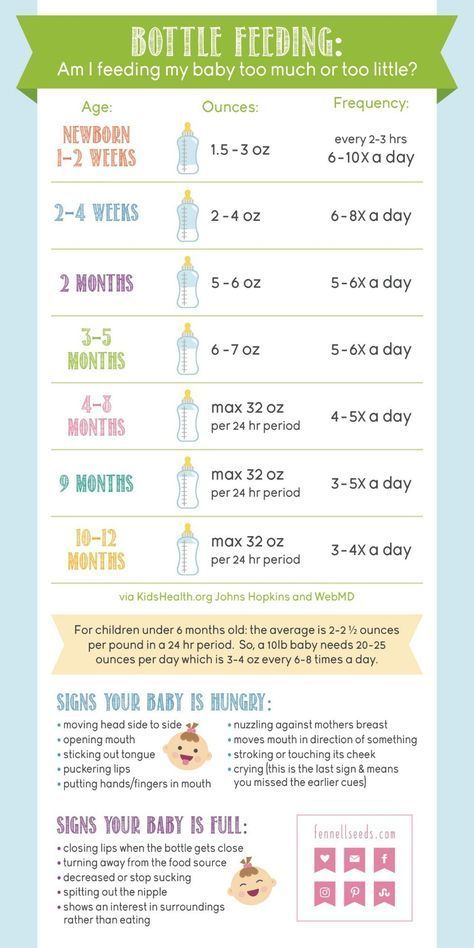 After all, she raised her children and knows better. As a result, I got digestive problems and allergies in my baby. Which only added to the difficulty for me.
After all, she raised her children and knows better. As a result, I got digestive problems and allergies in my baby. Which only added to the difficulty for me.
When I was pregnant with my son, even then I began to think about how to avoid most of the problems in the first year of his life. After all, as they say in a well-known advertisement, when the baby is comfortable, then his mother is happy and calm. I'll tell you honestly, having a medical education interferes with my life in many ways, because you know less - you sleep better. However, it also certainly helps by the fact that I can delve into the essence of the process taking place in the child’s body literally at the cellular level. Now it will not be enough for me only someone's experience. Exact explanations and justifications are needed. And friends, I figured it out. As you know, science is moving and what was considered useful 5-10 years ago has now turned out to be unhelpful, and some even harmful. Today I really want to share with you my observations and modern aspects in the nutrition of children at the age of 6 months.
I really hope that until 6 months your baby had only breast milk on the menu. If so, then get your grade, you are “five plus”. If you are feeding your baby only an adapted milk formula because for some reason you had to stop breastfeeding, you also get a high five. I imagine and have experienced in my own skin what it is like to resist the pressure of all close and not very close relatives, girlfriends, neighbors and just acquaintances. "What, you're not giving the baby juice yet?" or “Have you tried egg yolks yet? Poor child!".
I want to praise you and say that you did absolutely the right thing, that you did not succumb to their provocations and did not cause problems with the chair and sleep in your own child.
Rule #1.
Until the age of 6 months, the baby does not need any food, except breast milk or adapted formula.
Withstood, withstood. What's next? It is necessary to decide on the product of the first complementary foods. Considering all modern research and observations, porridge is the ideal first complementary food product. They are easily absorbed by his immature children's body and cause the least number of allergies.
Considering all modern research and observations, porridge is the ideal first complementary food product. They are easily absorbed by his immature children's body and cause the least number of allergies.
Rule #2. We start with porridge.
Which porridge to choose? Pediatricians around the world advise starting with gluten-free cereals, these are buckwheat, rice and corn porridge. Why is gluten dangerous? In a nutshell, these are abdominal pains, bloating, diarrhea, as well as an allergic reaction in the form of a skin rash and many other various unpleasant symptoms. I hope I convinced you, we will postpone gluten cereals for later.
What does complementary feeding look like? We start giving any new product with 1 teaspoon to assess the child's reaction to it. If the stool and sleep are not disturbed, and the skin remains clean, gradually increase the amount of porridge eaten and bring it to a full serving, replacing one breastfeeding or formula, that is, up to 200 ml.
Rule #3. Start with 1 teaspoon and increase gradually!
In our shops there is a great variety of different boxes with cereals. There are dairy and dairy-free, from one cereal and several, with and without fruits. You can get confused, so which one to choose? We always start with monocomponent porridge without milk and fruits. And why spend money on these new-fangled boxes, if you can cook porridge yourself. Then you will be 100% sure of its composition. Just take the selected cereal and grind it in a coffee grinder. You will get flour, which you will then cook.
Recipe for buckwheat porridge.
Take 2 tsp. buckwheat flour, dissolve in 2 tbsp. warm boiled water, stir so that there are no lumps, and pour into 120 ml of boiling milk. You can also use breast milk, which many mothers do. If you have frozen milk, it is ideal for making cereals. You can also use milk formula. It will be much better than ordinary cow's milk, because no one has yet canceled an allergy to cow's milk.

